Dějiny Šternberka (“Šternberk’s History” in English) publication by Palacký University Publishing House has won a public book design competition. The beautifully illustrated, visually and photographically rich publication documents in detail the time, development, and transformation of Šternberk’s over 700-year history. At the request of the city of Šternberk, the book is edited in such a way that it appeals equally to the professional public as well as common readers and Šternber’s own citizens.
Dějiny Šternberka is the first modern, comprehensive presentation of the history of a significant place in Moravia, which went through a very complex transformation, including the loss of the majority of the population after 1945.
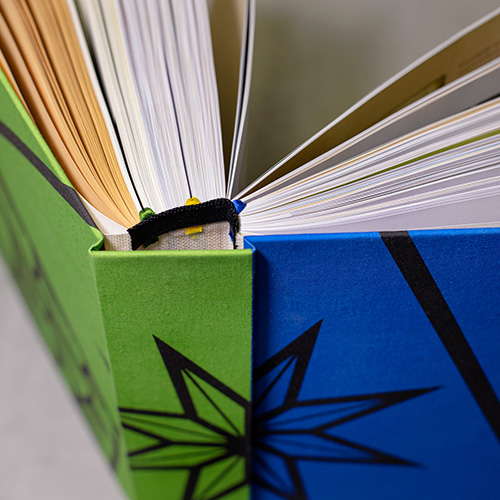
Dějiny Šternberka took six years to complete by a team of historians from the Faculty of Arts of Palacký University, who worked under the guidance of the book’s editor, professor David Papajík. “The preparation of the book started already in 2017, so the book completes six years of work. Both textually and visually, the book meets the strictest criteria imposed on this type of publication. Dějiny Šternberka is the first modern, comprehensive presentation of the history of a significant place in Moravia, which went through a very complex transformation, including the loss of the majority of the population after 1945,” says David Papajík.
The creation of such a vast and in-depth publication was made possible through collaboration with historians of the State District Archive in Olomouc, the National History Museum in Olomouc, the Archaeological Center in Olomouc, and the Masaryk University in Brno. This cooperation enabled extensive research of the sources, investigation, and analysis, without which the final manuscript could not have been finalized.
The Šternberk History publication is a mammoth 800-page title that was made possible with the right paper, printing, and binding choices
The impressive 800-page mammoth of a book was made possible thanks to the use of the uniquely lightweight Sappi Raw paper 115 gsm (576 pages), as well as Munken Pure 120gsm (144 pages), and Creative Board Sahara 120gsm (80 pages). Originally, the publication was supposed to be a two-volume work, but thanks to the use of papers with a small surface weight and sufficient opacity, the creators of the book convinced the client, the city of Šternberk, to change the concept of the book to a one-volume publication, which weights an impressive 3,6kg.

In the book, we separated the chapters with different types of paper. The chronological chapters are on Sappi Raw, while the Castle and Monastery chapters are on Munken Pure. The final index is printed in black and white on the Creative Board Sahara paper.
The book recounts the history of Šternberk on three levels. The first is the opening pages of a chapter, conceived as posters with a large photograph and the syllabus of the historical period covered in the chapter. The second level consists of photographs and reproductions of historical documents with labels, and the last, most extensive part consists of detailed texts with a rich annotation apparatus. Orientation in the book is done by the timeline at the foot of the two pages. The chapters are arranged chronologically, except for two chapters on the most important Sternberg monuments, which are the Sternberg Castle and Sternberg Monastery. “In the book, we separated the chapters with different types of paper. The chronological chapters are on Sappi Raw, while the Castle and Monastery chapters are on Munken Pure. The final index is printed in black and white on the Creative Board Sahara paper”, Papajík explains.
The V8 type binding – a cloth binding with borders and a solid facing – includes 3 ribbons in gold, green, and blue, the colors of the Šternberka coat of arms. White hot foil embossing was used on the front boards and spine, while the cover design symbolically refers to the German publication Geschichte der Stadt Sternberg from 1934, which was the first to summarize the history of Šternberk at the time. Both the cover and the layout were designed by Bc. Radim Měsíc. The book also contains 4 postcards that come in a specially designed postcard pocket.
Dějiny Šternberka is sold for the symbolic price of CZK 1,296, which is also the year corresponding to the first documented historical mention of the town. Those interested can purchase the book at the Šternberk Information Center, at the Lehečková Bookstore in Šternberk, at the city library and Exposition of Time in Šternberk, at the Lehečková Bookstore in Šternberk. It is also available in the UP Publishing House and on the VUP e-shop.
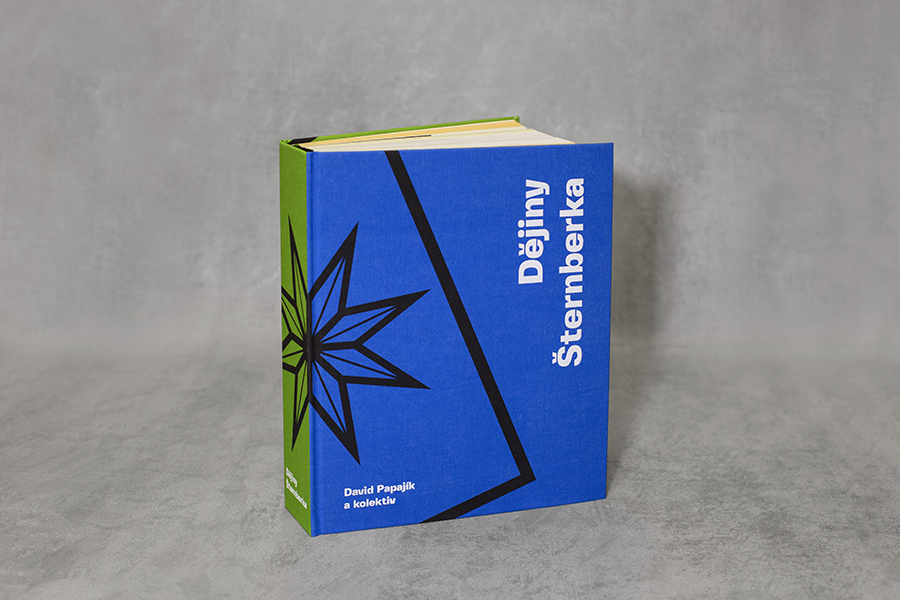
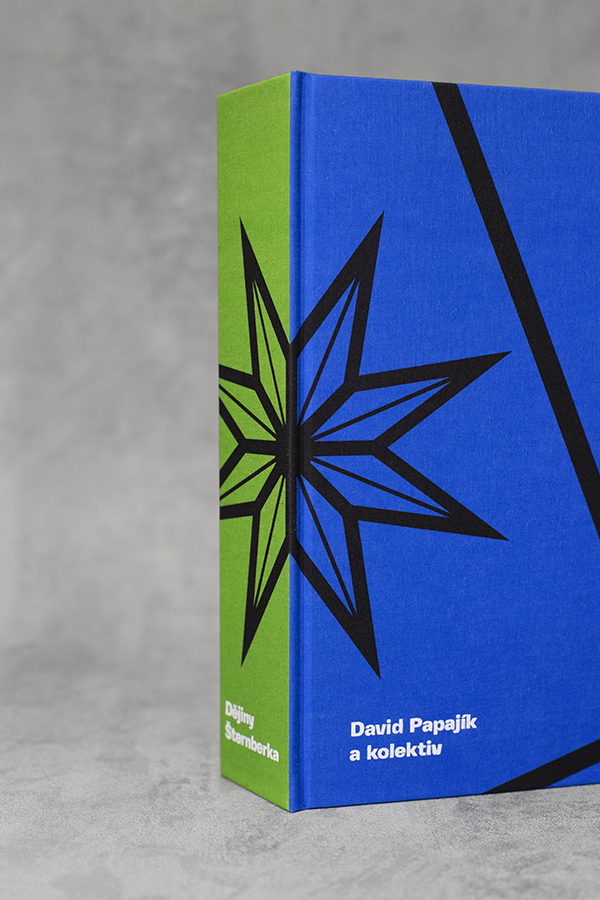

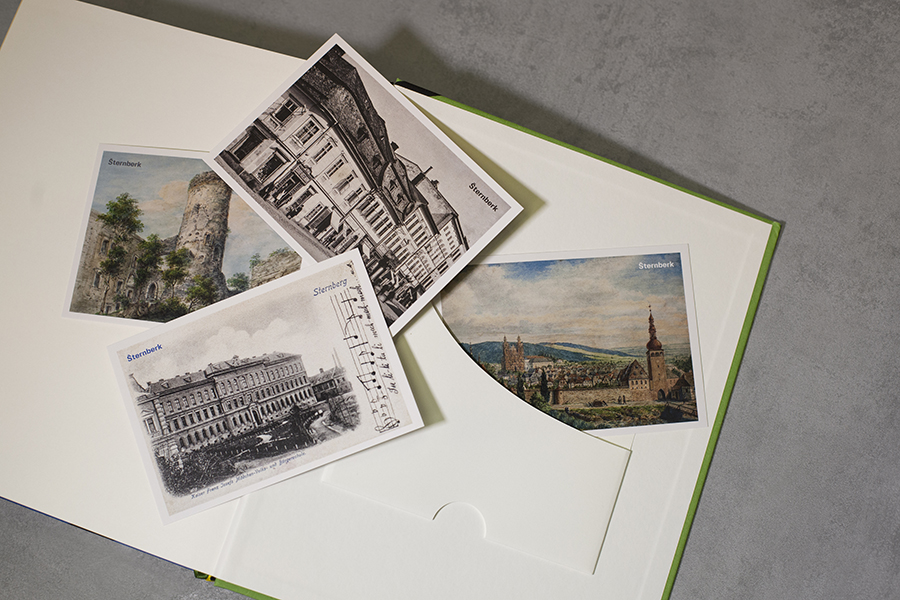
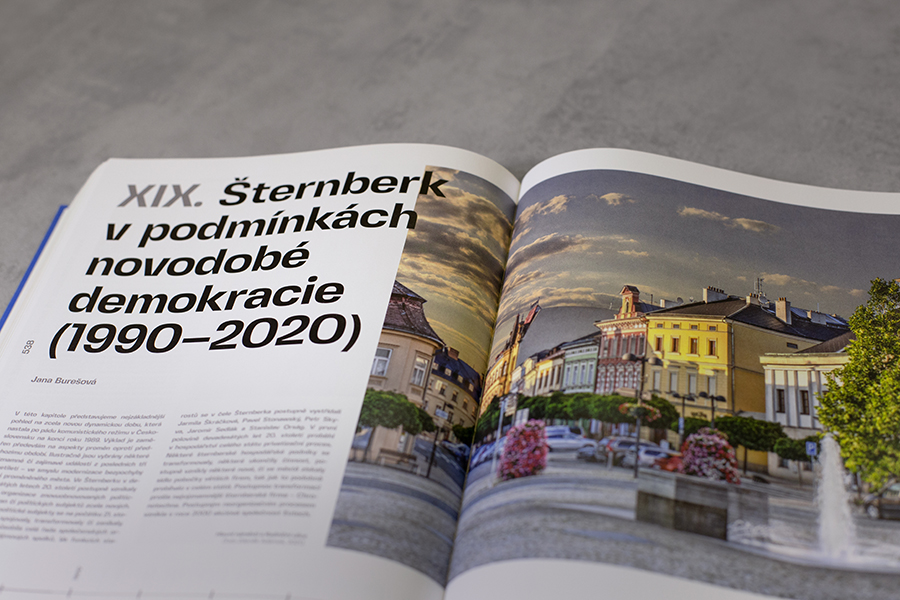
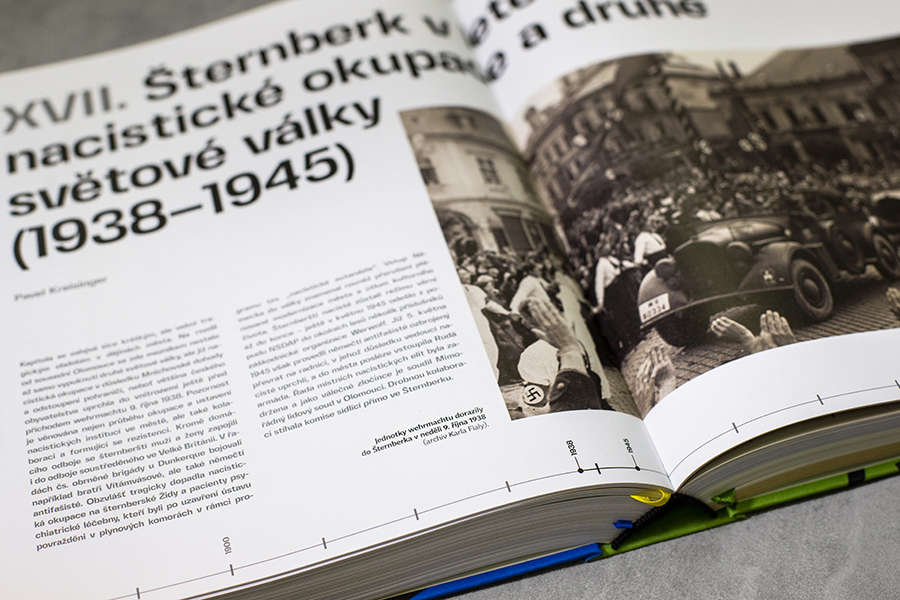
Images © by Monika Abrhámová Palacký University Publishing House

